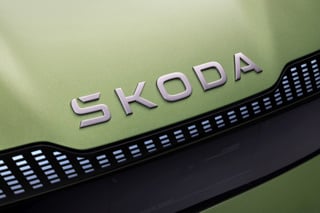As innovations go, it’s hard to match the impact of Henry Ford’s development of the assembly line in 1913.
Not only did it help make the Ford Motor Company one of the largest businesses in the world, it completely disrupted and transformed traditional modes of transport, creating the foundations of the auto industry we know today.
Over a century later, OEMs are still largely focused on efficiently designing, building and selling cars.
But, with electrification, automation and connectivity unleashing a new wave of disruption on a par with or even exceeding the impact of the assembly line, established automotive models are being challenged once again.
Here are five ways Henry Ford might have responded to this new wave of disruption in the auto world:
1. Put data in the driving seat
With the growth of connected car technology and the integration of sophisticated sensors, cars are now generating huge volumes of data – 25GB per hour according to some estimates.
All this data is providing the opportunity for carmakers to develop better and more relevant mobility services for their drivers – from real-time mapping services to traffic navigation to automatic breakdown assistance – lessening their reliance on selling cars.
A number of the established auto brands, including Toyota and Volkswagen, are now looking to move away from being carmakers alone to becoming broader mobility companies, with data and services at the heart of their business models.
Ford has also been prominent in making this shift, announcing big investments into mobility services while simultaneously cutting back on the number of car models it manufactures.
Over the coming years, we can expect this shift in the automotive sector to quicken. The global Mobility as a Service market is predicted to hit $1.75 trillion by 2028.
2. Embrace the Netflix approach
Another potential model being pushed by the large carmakers, and one Henry Ford might have found particularly attractive, is the subscription-based service, where customers pay a monthly fee to access a range of vehicles when and where they want.
Our research found almost three quarters of drivers expressed interest in the subscription model, particularly those in the 18 to 44 age group.
Respondents cited the convenience, peace of mind and the opportunity to try different cars as key reasons for its popularity.
A range of carmakers offer subscription services to customers, including Porsche, Volvo, Ford, Hyundai and China’s Lynk&Co.
They are now being joined by a host of start-ups breaking into the space as well, such as UK-based provider Drover and Cluno in Germany.
The next phase will see an entire ecosystem of subscription-related products and services emerge as everyone from insurance providers to oil companies to car dealerships seek to take a slice of the growing pie.
3. Find safety in numbers
With Tesla and Google chomping at the heels of the large auto brands, many are setting aside their age-old rivalries to explore how they can collaborate and find safety in numbers.
Take Daimler and BMW’s plan to bring their Car2Go and DriveNow platforms under one roof, combining a host of mobility services such as car sharing, parking, battery charging and bike rental.
Or Volkswagen’s joint venture with Chinese automaker, JAC Motors, to make and sell electric vehicles.
We can expect this new spirit of cooperation to expand beyond mobility services and traditional vehicles in the coming years to include even more ambitious joint developments, such as the design and build of new autonomous cars.
Honda has even invested $2.8bn in General Motors' driverless unit, with plans to use the technology to launch a fleet of unmanned taxis.
4. Don’t beat them, join them
The big innovations in mobility are now just as likely to come from start-ups as they are from the established auto brands.
Witness the impact US-based Optimus Ride is having on the development of autonomous vehicles, China’s PowerShare and its innovative EV charging solutions or JUMP’s contribution to electric bike sharing.
Rather than trying to compete these new companies out of the market, the smarter OEMs will increasingly look to partner with and acquire them in order to broaden their own mobility capabilities.
Henry Ford’s company has been making major investments in start-ups through its Smart Mobility division.
Other carmakers that have set up funds or accelerator programmes specifically designed to collaborate with and nurture innovative new companies include BMW’s iVentures and JLR’s InMotion.
5. A one-stop-shop for mobility
While these developments all represent important steps for the carmakers, the bigger prize in the shift to mobility services is arguably still wide open.
The next phase could see the emergence of fully integrated mobility platforms, which combine all forms of transport, both from the public and private sector.
If Henry Ford was alive and starting out today, I believe this is exactly where he’d be placing his bets.
The company that has arguably come closest to developing such a platform is in fact a start-up.
Through Finnish app Whim, which has been cited as the future of urban mobility, users are able to access virtually all types or transport, whether that be purchasing train tickets, booking an Uber driver or hiring a car or bike.
Seeing the opportunity of an integrated mobility platform, the established carmakers are now also increasingly eyeing this space too.
Take what’s been happening with mapping and location data company, HERE Technologies, which was bought by a consortium of German car makers.
In January, the company launched its Open Mobility Marketplace, a “global one-stop shop for on-demand transportation and mobility services.”
If the platform is a success, could this offer a model for how an OEM-led integrated mobility system could work?
Whichever approach automotive companies take to ride this wave of disruption, the lessons of HERE Technologies and of Car2Go/DriveNow is that they are unlikely to do it alone.
Whether it be working with each other, collaborating with Start-ups or teaming up with the tech giants, partnerships is now a key trend running through the auto world.
As Henry Ford himself once famously said, “Coming together is a beginning, staying together is progress and working together is success.”
Author: Ana Ramirez, international head of automotive research at Simpson Carpenter



















Login to comment
Comments
No comments have been made yet.